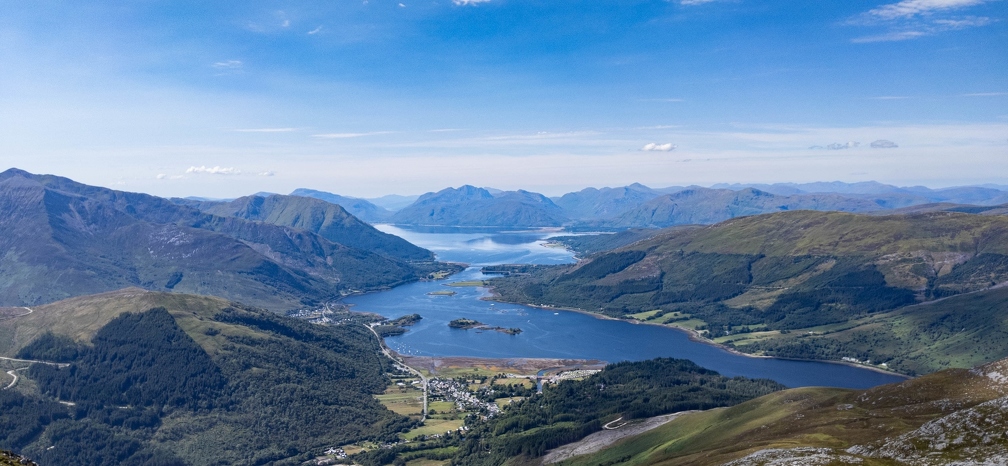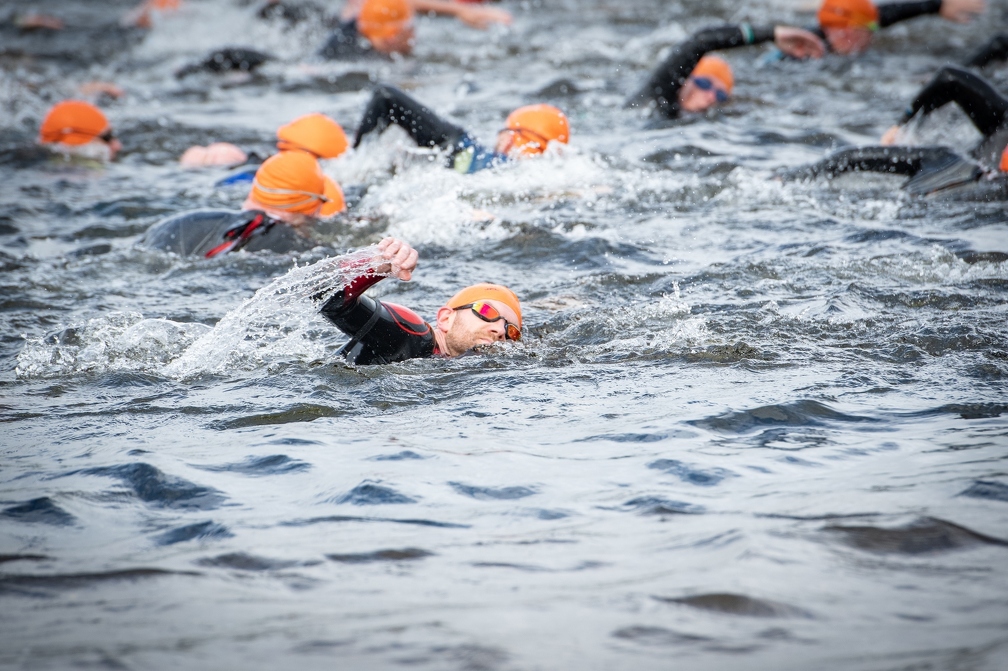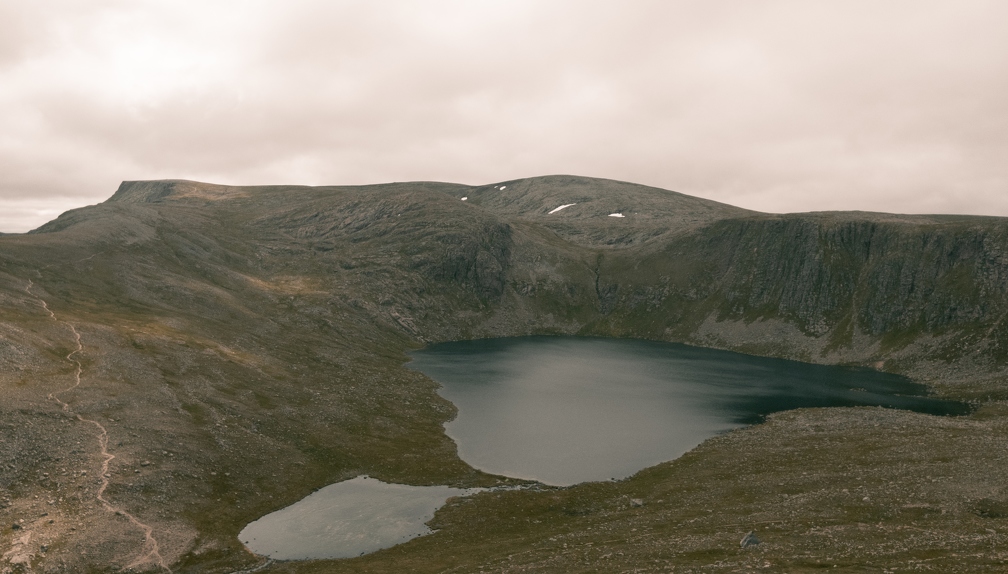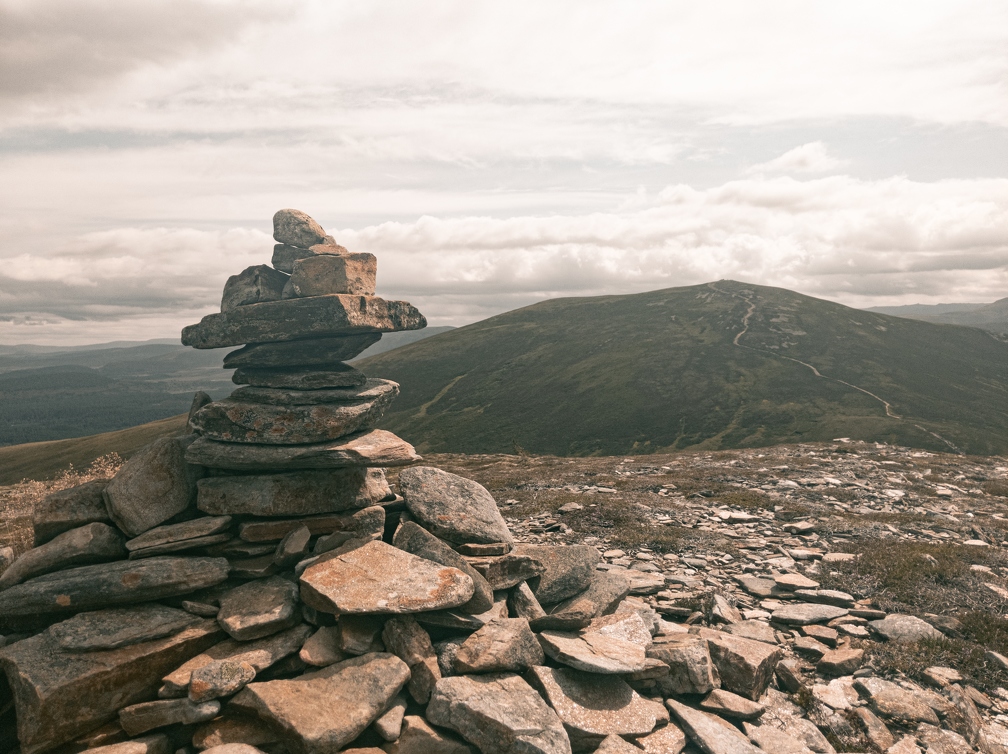Updates
Filters

The South Glen Shiel Ridge
It was 2018 that I’d last ventured to hills above the Great Glen, to the hills above Glen Shiel, when myself and Magnus walked the Brothers and Sisters Ridge on the north side of the glen, on a blisteringly hot day on our way South after the Benbecula Half Marathon that year. I’d planned to climb the hills on the South the following year with Andrew, but we scrubbed that plan thanks to heavy rain, which ended up making our already logistically complicated plans to do it with a single car unravel. So it was in June 2012, after two years of pandemic, that plans came together for me, Magnus, and Declan to take-on these hills over the Platinum Jubilee weekend. Only for me to contract COVID-19 and spend the entire long-weekend in bed. Eventually a new date was set, 20 August, and Andrew and Shona would join.

Crossing the Aonach Eagach
I’d been putting-off one single hillwalk for some time, and none of the other Munros south of the Great Glen have quite the reputation of the Aonach Eagach, reputedly the narrowest and trickiest ridge on the British mainland. However, the opportunity to tackle it came up on a Thursday afternoon in a WhatsApp chat with other IGR folk, and so I found myself being picked-up at 6:30 in the morning by Ross, then meeting Thejas before driving north to park in the three sisters carpark in Glencoe. The forecast was for the weather to be very hot as the day went on, and we’d hoped to be able to complete most of the ascent as early as possible in the day.
Mimicking mergers and hyperbolic VItamins
A couple of months ago a student who I’ve been working with for the last year or so put out a new first author paper, which was an exciting moment. This is the first time I’ve had a student publish, so I’m enjoying a little buzz of excitement from that, but Weichangfeng should enjoy all the glory of getting the project finished.

Loch Lomond Beastie Triathlon
It was an early start and a rather dreary day when the time came for my first triathlon. Doing one of these had been on the cards for a while; I’d agreed to do one sometime before COVID struck, but without a great deal of confidence. At the time I’d regarded swimming two lengths of the university pool without stopping for breath and to recover to be a good day, so the notion of heading out into a cold loch to swim 750m was not immediately inviting. I did, however, resolve to correct that deficiency, and by last winter I could get up to four lengths without being completely exhausted, and I was actually swimming with my head underwater most of the time without panicking.

The Centre of the Cairngorm
The final big walk of my second trip to the Cairngorms for 2022 was to be one which would take me deepest into the plateau, to the arrow-head shape of Beinn Mheadhoin. Walk Highlands makes it seem remote by not combining it with any of the other hills around it, but this was to be a day of tops and summits for me. I started out on the bus from just outside the hostel which took me up to the ski centre car park. There was a lot of construction going on around the funicular, which is in the process of being reinforced, and it took a couple of minutes of wandering about to actually find the way onto my path. In a minor novelty for the last few weeks I was actually able to see my breath as I left the centre and climbed up Windy Ridge.

Meall a' Bhuachaille
After a reasonable amount of indecision over whether to head for Beinn Mheadhoin today I finally came to the conclusion that it was high time I had a rest day. The forecast for Thursday was arguably better than it was for today anyway. Rest days are for the Corbetts, apparently, ans so I set out after a slow morning towards Meall a’ Bhuacaille; the climb conveniently sits right behind the hostel. Almost all the way there is a well-engineered path, and the ascent to the ridge was quite fast, and from there it was only a short additional climb to get the summit (810m) of my third Corbett.

Baking in the Bynacks
The bubble of heat was truly upon us by Tuesday, and even in the midst of the mountains it had been a very warm night. I planned, therefore, to set out for Bynack More early, hoping to finish the run before the Glens reached their forecast 35-degrees! The forecast was also for a bit of an oddity; a cloudless inversion, with the peaks of the Cairngorms basking in 29-degree heat early in the morning.

The Eastern Monadhliath on Fair Monday
With the warmest days of the summer forecast, and increasingly dire warnings about the danger of a 40-degree heatwave reaching the UK, I was lucky to find myself having made plans months before to visit Glenmore, with a view to finishing off the central Cairngorm Munros. On Sunday I caight the train up to Aviemore from Queen Street, and then walked the 10km from the station up to the youth hostel, arriving in good time to take a (wetsuited!) swim in Loch Morlich (it being two weeks until the Loch Lomond triathlon, which I’m slowly starting to feel, if not confident, then less worried about).
Cairn Table Hill Race
With perhaps the worst conditions of all the Bog and Burns so far, Cairn Table started in a downpour, and had no view at the summit (though I was briefly able to see the enormous cairn at the summit from the start line). At times more akin to an obstacle course race than a hill race, with plenty of boards laid to bridge some of the worst areas of bog, which could themselves be more of a liability to negotiate than the mud. A very runnable clim, followed by a good descent made this one of my better races of the season, and it was the only one where everyone got a medal at the end.

Beinn a' Ghlò
It was yet another sunny day as we drove up the A9 to reach Pitlochry, and start up the winding, steep singletrack road to the start of the route up Beinn a’ Ghlò. There’s a small car park at the start of the walk, just beside a small area of forestry plantation. From the start of the walk the first hill of the day was clearly visible as a pyramid rising from the lower ground, and while we had a short walk-in to get to it, it provided a very quick climb up to the high level of the ridge. From the first Munro, Càrn Liath, there were good views across Perthshire, and we were left on the fine, gently meandering ridgeline out towards the next two Munros.
Maddie Moss Hill Race
There had been the threat of rain most of the day, but things stayed clear, however conditions were very windy. The climb started slightly further up the hill than the previous week’s Law Breaker, which avoided the bottle-neck up the steps from the car park. I felt weaker than the previous week on the ascent, though it seemed to go more easily, and I felt pretty good coming off the summit of The Law, to be hit by the strong wind (almost as bad as Tinto in 2021!) on the run across to Ben Cleuch, though the terrain was good and dry, and despite the wind I made fairly fast progress. From Ben Cleuch onwards I had a much-needed tailwind out across to Andrew Gannell Hill, and then much of the descent was extremely runable, even by my standards, with just the last 500m or so presenting any really steep terrain.
Law Breaker Hill Race
While we passed through a heavy shower on the drive across, we were fortunate to just arrive in time for the weather to clear. The race route started at the car park in Tillicoultry, and went straight up the steps towards the Mill Burn, and presented a bottleneck at the start of the race, which I probably failed to fully recover from during the climb. The climb itself was harsher than I’d anticipated; this was by some way the greatest elevation in a race I’d done since Beinn Dubh which felt a long time ago. The race route presented at least two false summits, which was somewhat demoralising, and I probably walked the route a bit more than I’d have liked. However, once I’d made it to the top the descent went pretty well and fairly fast. If nothing else, a good warm-up for Maddy Moss the next week.

Beinn Bhrotain and Monadh Mòr
The final set of hills for my big trip to Braemar were to take me back into some of the remoter parts of the national park. It was a warm and clear day, and I set off with the bike one last time on the Linn of Dee Road, and then onwards to White Bridge. I left the bike around 500m past the bridge, and set off at a jog towards the hill, feeling my relative lack of fitness (I’d been nursing knee pain since the end of May which was still affecting me while running).

Beinn a' Chaorainn and Beinn Bhreac from Derry Lodge
I’d been in the Cairngorms for over a week, but the start of that period I’d kept away from the big hills thanks to high wind forecasts (and, as it turned out, high winds in reality). So the second week of my trip was going to involve back-to-back days of hills, and this was the third in a row. I was just about starting to feel it, and my legs grumbled a little at cycling out to Linn of Dee yet again. This time I was joined by Andrew and Shona, who were themselves up in Braemar, also here to climb Munros. We met at the Linn of Dee carpark and then cycled on along the same track I’d taken two days earlier to get to Derry Lodge.

Ben Avon & Beinn a' Bhuird
After excellent conditions the day before on the Macdui horseshoe, I was out again in search of more hills the next day. This time the forecast was slightly less favourable, and I’d have a substantially longer walk-in, to reach the most easternly region of the plateaux, and the impressively large Ben Avon.

Ben Macdui Horseshoe
After a weekend of high winds over the massif, and a general lack of favourable walking conditions, on Monday the forecast had finally turned favourable. So it was that I set off on an early bike ride from Braemar, past Linn of Dee, and out to Derry Lodge, ready to tackle one of the bigger rounds from this trip. Compared to some of the other ride-ins in these parts, this one felt like a breeze, though I took a slight detour from the road, and took the landrover track which I’d climbed Creag Bhalg from a couple of days earlier. On the way out I passed a fair number of walkers and cyclists (including one braving the landrover track on a road bike): clearly the hills and walks from Derry Lodge were in demand.

On Morrone
The poor weather outlook was set to continue for at least another day, though by now I was itching for something a little bigger than a Graham, and decided that it was finally time, on my third visit to Braemar, to actually climb the hill which rises above the town: Morrone.
A Graham in Deeside
The forecast was for strong winds on the main plateaux of the Cairngorms, and all of my remaining big hills for the trip were up in that direction, so I decided that it was time for an easier day, up a slightly less celebrated, and hopefully less exposed hill. Once again taking the bike from Braemar I headed out (for the first time) to Mar Lodge across Victoria Bridge, and then headed up to the road on the far side of the valley, failing woefully to find the landrover track I’d planned to take to get to the hill.

Ey Five
The weather forecast was not fantastic, but looking ahead things didn’t appear to be getting any better. So I took a risk, and set off on what was to be the longest and most remote of my planned walks for this trip, which would take me deep into some of the remotest mountains on the margins of the Mounth and Atholl.

Rolling into the Deep (Cairngorm)
It was day one of a holiday which had already got off to a somewhat chaotic start. I’d relied on getting the train to Aberdeen, and then the Stagecoach bus in to Braemar in order to get a mountain bike up for a grand expedition into the mountains.

Reaching the hundred above the A9
I’d spent a lot of time trying to decide on the perfect hill to complete my first century, the ton, of Munros on. I’d thought about trying to make it something spectacular (maybe this was the time to do Ben Nevis?) or geographically appropriate (my first was the most southernly, Ben Lomond, maybe I should aim for another cardinal direction?). I’d actually planned to make Mount Keen my hundredth, and then realised that over the winter I’d misremembered my count, and carefully laid plans to start the year on number 100 turned into plans to climb my 99th.

Closing-in on a milestone: 99 Munros Bagged. Part 4
In the final instalment of the series, I cover all of the hills from the second plague year, 2021, which don't range quite as far and wide as previous years, but include some very tough days out, including trips into some of the remotest sections of the central Highlands; Loch Ossian, and Ben Alder, and a high-level traverse which had been in planning for many years.
Dumyat Hill Race
It was a sunny, and fairly warm evening; good turnout (presumably the best for the whole series). I probably had a slightly slower start on the tarmac through the university grounds than I’d have liked ideally, but once I was up and through the forest it was pretty good going all the way to the top. Got a very brief, but good view as I summitted, and then was very happy with most of my descent, though was almost taken out by a Stirling runner who tripped just above me on a tree root.
New and interesting things this week
This post is a vague collection of things I regarded as moderately noteworthy this week, or interesting things which I found, read, or did during the course of the week. I’m not really sure anyone else would want to read it, but please feel free.